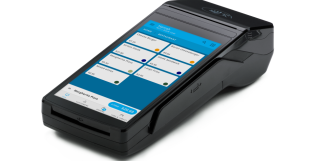Payment Methods - And How To Accept Each Of Them
There are a lot of ways to pay for things these days. Credit and debit cards, of course, are the most common. But there are also new payment methods like mobile, electronic cheques, and even cryptocurrencies.
For small business owners, it's important to know about all the different payment methods and how to accept them. So, in our complete payment method guide, we'll cover the following:
- The different payment options your customers can choose from.
- The pros and cons of each of the payment methods.
- How to accept each of the payment methods.
Let's get started!
What are the different payment methods my customers might use?
You're probably already accepting credit and debit cards as a business owner. But did you know there are over a dozen payment methods?
Let's take a look at some of the most common payment types your customers might use:
Credit cards:
The most common payment type, credit cards, allows customers to borrow money from a bank to pay for goods or services. Credit cards typically have high-interest rates, so customers often carry a balance from month to month.
Pros
- Consumers can borrow money to make purchases: This can be helpful if a customer needs to make a large purchase or doesn't have the cash to pay for it.
- Most businesses accept credit cards: You probably already accept credit cards, so you wouldn't need to set up any new payment equipment.
- Credit card companies offer rewards programs: Some credit card companies offer rewards programs, like cash back or points, that customers can earn by using their cards.
Cons:
- They have high-interest rates: If customers carry a balance on their credit card from month to month, they'll accrue interest charges.
- They can charge fees: Credit card companies can also charge annual, late payment, and foreign transaction fees. Check out our complete guide on credit card processing fees for more on this!
- Higher processing costs for businesses: Accepting credit cards means paying processing fees, which can add up over time. Offering a cash discount program can help offset these costs by encouraging customers to pay with cash instead, reducing your overall fees.
Debit cards:
Debit cards are linked to a customer's bank account and can be used to withdraw cash or make purchases. When a customer uses a debit card, the money is deducted from their account immediately.
Pros:
- They're linked to customer bank accounts: This means customers can't spend more money than they have in their accounts.
- They can be used to withdraw cash: Customers can make cash payments after withdrawing this money from an ATM using their debit card.
- They are accepted by most businesses: You probably already accept debit cards, so you wouldn't need to introduce any new equipment.
Cons:
- Debit card payments have spending limits: Most debit cards have a daily spending limit and if your customers want to make cash payments there's also a daily withdrawal fee. If a customer needs to make a large purchase, this can be a problem.
- They don't offer rewards programs: Credit cards typically offer rewards programs, like cash back or points, that customers can earn by using their cards. Debit cards don't typically offer these same programs.

Payment Processing Services Made Simple
- One flat rate, no matter the card
- One reporting destination
- One support team, available 24/7
Mobile payments:
Mobile payment apps like Apple Pay, Google Pay, and Samsung Pay all allow customers to pay for goods and services using their smartphones. To use mobile payments, customers simply hold their phone up to a contactless payment terminal, and the transaction is processed wirelessly.
Pros:
- They're convenient: Customers can pay for goods and services using their smartphone, which is more convenient than carrying cash or a debit/credit card.
- They're secure: When customers make a mobile payment, their payment information is encrypted, so it's less likely to be stolen by hackers. Learn more about secure payment processing in our handy guide.
Cons:
- They are still relatively new: Mobile payments are still relatively new, so not all businesses accept them yet.
- They require a smartphone: Not all customers have a smartphone, so they might not be able to use this payment method.
- Apple pay and other smartphone payment methods still have a daily spending limit: Most smartphone payment methods, like Apple Pay, have a daily spending limit. If a customer needs to make a large purchase, this can be a problem.
Check out our guides for more on this:
Electronic cheques:
Customers can also pay by electronic cheque, also known as an e-cheque. To pay by e-cheque, customers enter their bank account information into an online form. The funds are then transferred from their account to the merchant's account.
How are electronic cheques different from bank transfers?
These two payment methods differ in a few ways. First, electronic cheques are processed through the ACH network, while bank transfers are processed through the Federal Reserve. Second, electronic cheques have to be authorized by the customer, while bank transfers do not. Finally, electronic cheques typically take one to two days to process, while bank transfers can take up to five days.
Pros:
- Electronic cheques can be used to pay bills: Customers can use electronic cheques to pay their bills, which is more convenient than mailing a physical cheque.
- Electronic cheques are accepted by most businesses: You probably already accept electronic cheques, so you won't have to spend money on extra equipment.
Cons:
- Electronic cheques can take a few days to process: It can take a few days for an electronic cheque to clear, so customers might not have access to their funds right away.
- Electronic cheques can be rejected: If a customer's bank account doesn't have enough money to cover the payment, the electronic cheque will be rejected.
Cryptocurrencies:
Cryptocurrencies are digital currency used to buy goods and services. Bitcoin, the most well-known cryptocurrency, is slowly gaining acceptance as a form of payment.
Pros:
- They're secure: When customers make a payment with cryptocurrency, their payment information is encrypted, so it's less likely to be stolen by hackers, and you can reduce fraud.
- Can be used to make online payments: Customers can use crypto to buy goods and services from businesses that accept this payment method.
- Can expand your customer base: Some customers only want to do business with businesses that accept cryptocurrency, so accepting it can help you attract new customers.
Cons:
- They can be volatile: The value of cryptocurrency can fluctuate wildly, so there's a risk that customers might not have enough money to cover the purchase when they try to pay.
- They're still new: Cryptocurrencies are still relatively new, so not all businesses accept payments made in this way. You might need to set up a new payment processing service to accept cryptocurrency payments.
- Cryptocurrencies require special storage: Cryptocurrency needs to be stored in a digital wallet, which can be lost or stolen if it's not properly secured.
Pay-in-three (BNPL):
Pay-in-three (also known as buy now pay later) is arguably one of the most spoken-about online payment methods, and it's becoming popular with online shoppers everywhere. With this payment method, customers can split their purchases into equal payments. The first payment is made at the time of purchase, and the remaining two payments are automatically charged via direct debit to the customer's card over the next two months. Klarna, Afterpay, and Affirm are all popular pay-in-three providers.
Pros:
- Pay-in-three can help customers afford larger purchases: Customers can use pay-in-three to finance larger purchases that they might not be able to afford all at once.
- Pay-in-three is interest-free: Customers don't have to pay any interest on their purchase if they pay it off within the three-month period.
- Pay-in-three is available at many online stores: More and more online retailers are offering pay-in-three as a payment option, so customers can use it to shop at their favorite stores.
Cons:
- Late payments can be expensive: If a customer doesn't pay off their purchase within the three months, they'll be charged interest and fees.
- Could tempt customers to spend more than they can afford: Customers might be tempted to make a larger purchase than they can afford if they know they can pay for it over time.
- Not available at all stores: Most stores don't offer this payment option as it's commonly used for online purchases.
How to accept card payments as a small business
As mentioned, these are the most common payment methods, so your business must accept them.
- Step 1: Find a credit card processing provider: There are many credit card processors out there, so you'll need to compare your options to find the best one for your business. When comparing providers, be sure to look at the fees they charge, the equipment they offer customers (e.g., credit card terminals or a hospitality / retail POS system), and the features they offer.
- Step 2: Open your merchant account: a merchant account is a special bank account that allows you to accept credit card payments. You'll need to open a merchant account with a bank or credit card processor.
- Step 3: Get a credit card terminal: 0nce you have a merchant account, you'll need to get a credit card terminal or POS system. This is the equipment you'll use to accept credit card payments from your customers.
- Step 4: Start accepting credit cards: now you're ready to start accepting credit card payments from your customers.
How to accept mobile payments as a small business
There are many different ways to accept this payment method, but the most common way is to use a mobile point-of-sale system. With a mobile POS system, you can accept credit and debit card payments using your mobile phone. A mobile retail / hospitality POS system should work with payment apps like Google pay or Apple pay.
Another common way is to use a payment gateway. A payment gateway is a service that allows you to accept credit and debit card payments online. Payment gateways typically charge a per-transaction fee plus a percentage of the transaction amount.
How to accept crypto payments as a small business
Here are some steps you can take to start accepting cryptocurrency payments:
- Step 1 Get a crypto wallet: These digital wallets allow you to store, send, and receive cryptocurrencies. There are many different types of crypto digital wallets, so you'll need to choose the one that's right for your needs.
- Step 2 Find a payment processor: Once you have a wallet, you'll need to find a payment processor that supports cryptocurrency payments. Some popular payment processors that accept crypto are BitPay and CoinPayments.
- Step 3 Start accepting crypto payments: Now you're ready to accept cryptocurrency payments from your customers.
How to accept electronic cheque payments as a small business
Electronic cheque payments are payments made using an electronic cheque. An electronic cheque is a digital version of a regular cheque. It can be used to pay for goods and services online or over the phone.
There are several ways to accept electronic cheque payments, including using a payment gateway that supports electronic cheques or an e-cheque processor. An e-cheque processor is a service that allows you to process electronic cheques. E-cheque processors typically charge a per-transaction fee plus a percentage of the transaction amount.
Final thoughts
So there you have it. These are some of the most common physical and online payment methods that customers prefer and that your small businesses can benefit from.
By accepting these payment methods, you'll be able to provide your customers with multiple payment options and make it easier for them to pay you.
Of course, there are many other payment methods out there, so be sure to explore all of your options before deciding which payment methods to accept. Plus be sure to offer a variety of backup payment methods to your customers so that you never miss a sale!
Discover the essential insights on EMV technology and its impact on secure payments. Read our blog "EMV Meaning: What It Is and Why It Matters for Secure Payments" to learn how this powerful tool safeguards your transactions and enhances financial security.
Speak to our team of experts about how Epos Now payments can help your business!




